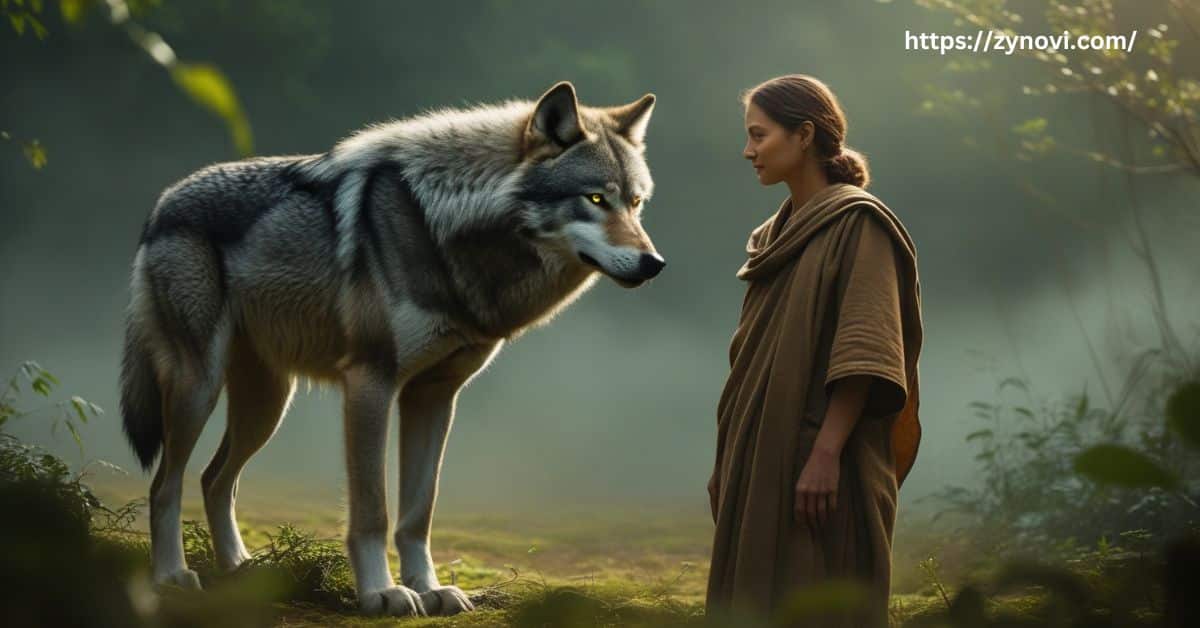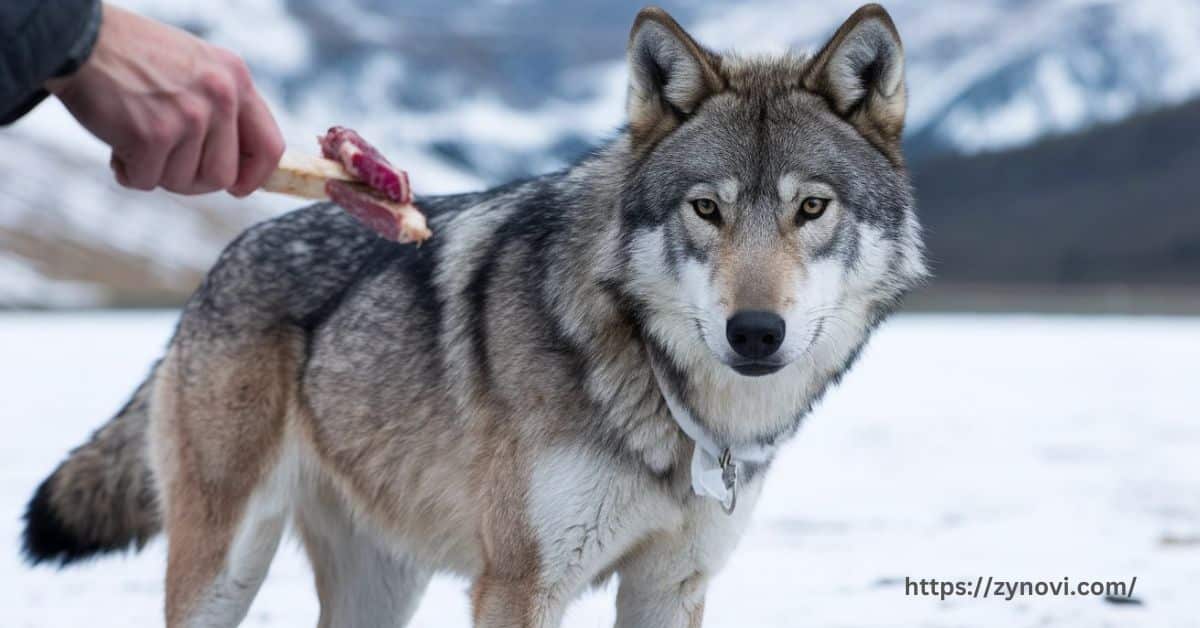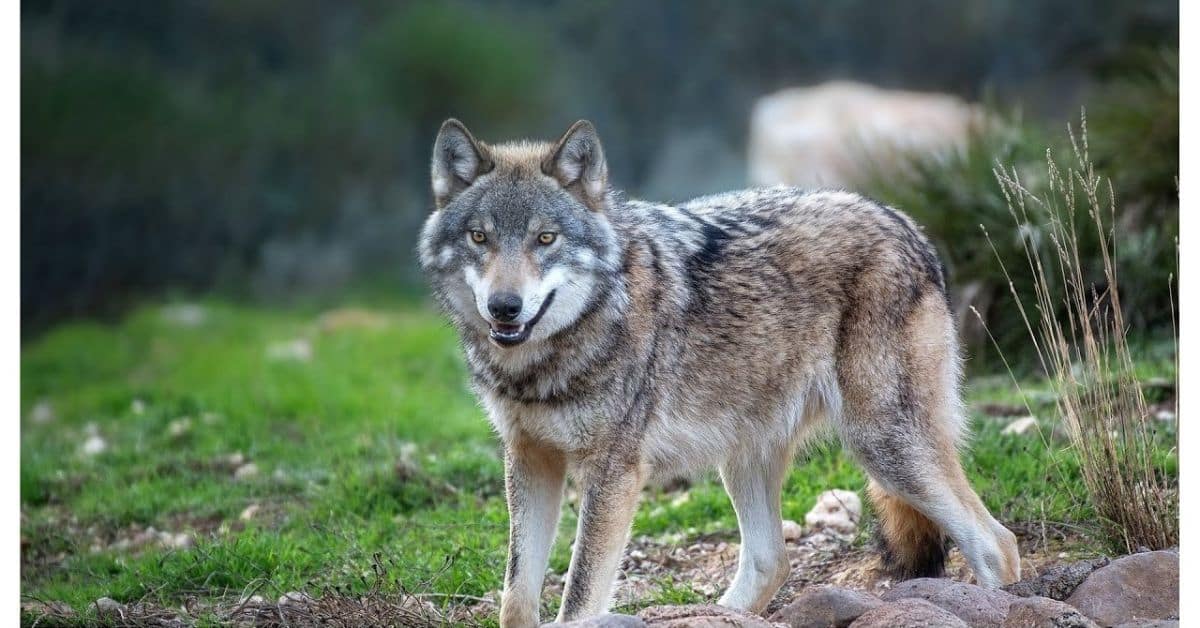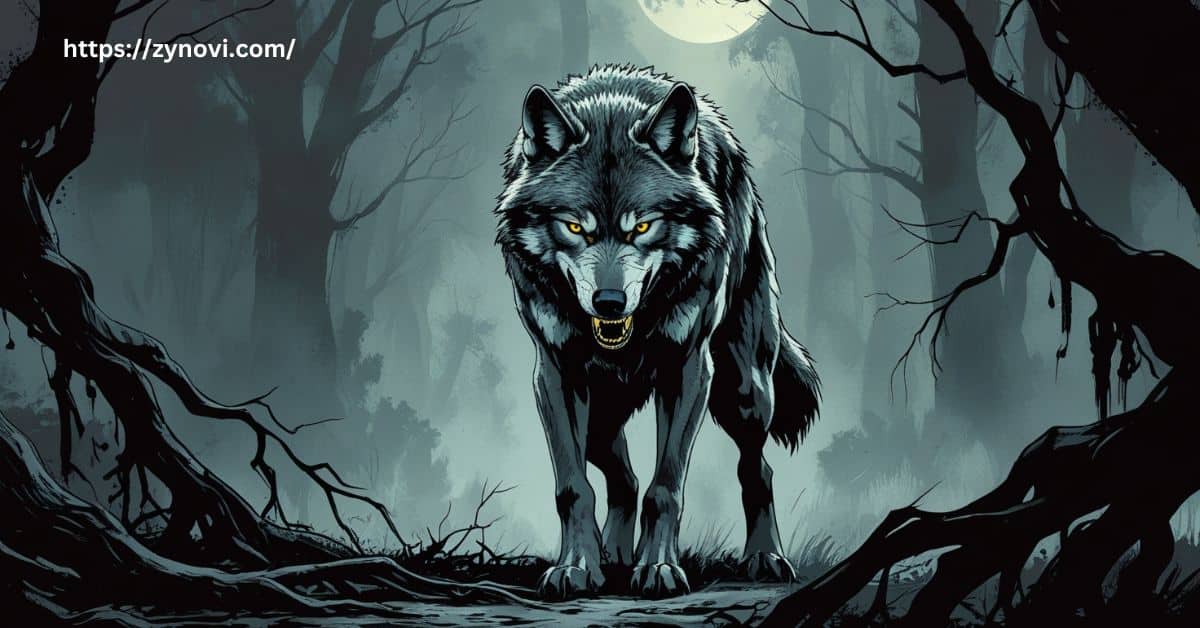Do grey wolves attack humans? They rarely pose a threat to humans, as they typically shy away from people and prefer to avoid confrontation.
This question sparks curiosity and concern, but the truth might surprise you. Despite their fierce reputation, grey wolves are not typically a threat to people. In fact, attacks on humans are incredibly rare and often the result of unusual circumstances.
But what leads to these rare encounters, and what should you know about grey wolves in the wild? If you’ve ever wondered whether you’re at risk during outdoor adventures or simply want to understand these majestic creatures better, keep reading. You’re about to discover the facts that will ease your mind and deepen your respect for wolves.
Understanding Grey Wolves
Grey wolves (Canis lupus) are often portrayed as fearsome predators in folklore and popular culture. Tales like Little Red Riding Hood have cemented their image as dangerous animals lurking in the shadows.
Physical Characteristics and Adaptations
| Feature | Description |
|---|---|
| Weight | Adult grey wolves weigh between 50 to 110 pounds, depending on their habitat. |
| Height | They stand 26 to 32 inches at the shoulder. |
| Sexual Dimorphism | Males are typically larger than females. |
| Coat | Thick double-layered coat ranging from gray to white, brown, and black. |
| Temperature Adaptation | Provides protection against extreme climates in regions like Canada, Alaska, and Russia. |
| Jaws and Teeth | Equipped with powerful jaws and sharp teeth for effective predation. |
| Stamina | Excellent stamina; can travel up to 30 miles in a day. |
| Speed | Can reach speeds of 35-40 mph in short bursts. |
| Habitat Adaptation | Adapted to thrive in diverse environments. |
Habitat and Range
Grey wolves are widely distributed across North America, Europe, and Asia.
They inhabit forests, tundras, grasslands, and even deserts. Specific regions with significant populations include Yellowstone National Park, Scandinavia, and parts of Montana, Wyoming, and Idaho.
Their adaptable nature has enabled them to survive in both remote wilderness and areas affected by human encroachment.
Role in the Ecosystem
Grey wolves play a crucial role as apex predators. By regulating populations of prey species like elk, deer, and beavers, they maintain ecological balance.
Their predation indirectly benefits other species, such as songbirds, by preventing overgrazing.
The reintroduction of wolves to Yellowstone National Park in the 1990s showcased their immense impact on biodiversity and ecosystem health.
Do Grey Wolves Attack Humans?

Frequency of Human Attacks
Documented cases of wolf attacks on humans are exceptionally rare. Wolves generally exhibit natural avoidance behavior, steering clear of humans whenever possible. Research shows that less than 1 in a million wolf encounters result in an attack, and these instances are often linked to unusual circumstances.
Historical Accounts of Wolf Attacks
Historically, wolf attacks have been recorded in parts of Europe and Asia, especially during times of food scarcity or outbreaks of rabies. For instance:
- In 18th-century France, the infamous “Beast of Gévaudan” was blamed for numerous deaths, though it’s speculated this was not a typical wolf.
- In India, some attacks in rural areas have been associated with wolves preying on livestock, leading to conflicts.
Factors Influencing Wolf Aggression
Several factors can lead to human-wolf interactions turning aggressive:
- Rabid wolves: Wolves infected with rabies display erratic and aggressive behavior. This condition often overrides their natural avoidance instincts, making them more likely to attack humans.
- Food scarcity: When prey species such as elk or deer are unavailable, wolves may venture closer to human settlements in search of food, increasing the likelihood of conflict.
- Habituation: Wolves that become accustomed to human presence through intentional or unintentional feeding lose their natural fear of humans. This can lead to bold or aggressive behavior.
- Human encroachment: Logging, agriculture, and urban expansion reduce wolves’ natural habitats, forcing them into closer proximity with people.
- Rabid wolves: Wolves infected with rabies behave erratically and may attack humans.
- Food scarcity: A lack of natural prey can drive wolves closer to human settlements.
- Habituation: Feeding or frequent contact with humans can reduce wolves’ natural fear.
Behavioral Analysis of Wolves
Grey wolves are inherently cautious and curious creatures, shaped by their complex social structures and natural instincts. Wolf packs, led by an alpha pair, ensure a harmonious and strategic dynamic within the group.
Typically, wolves prefer to observe humans from a distance, retreating upon approach. Unlike bears or mountain lions, wolves rarely perceive humans as prey, reflecting their natural avoidance behavior and preference for non-confrontation.
Do grey wolves attack humans? Myths vs. Reality
Myth: Wolves hunt humans as primary prey.
Reality: Wolves are apex predators, but their primary targets are animals like elk and deer. Human attacks are rare anomalies, typically resulting from specific circumstances like rabid wolves or extreme food scarcity.
Myth: Wolf howling signals danger.
Reality: Contrary to popular belief, wolf howling is primarily a form of communication within the pack. It helps wolves locate each other, establish territory, and maintain social bonds rather than signal imminent threats.
Media Portrayal of Wolves
Movies, folklore, and popular stories often depict wolves as dangerous villains or menacing creatures, perpetuating widespread misconceptions about their true nature.
Classics like “Little Red Riding Hood” have cast wolves as threats, overshadowing their shy demeanor and critical ecological role.
In reality, wolves are essential predators, maintaining balance in ecosystems by regulating prey populations and promoting biodiversity.
Comparison to Other Predators
| Predator | Average Human Attacks Annually | Behavior Towards Humans |
|---|---|---|
| Grey Wolves | Fewer than 10 | Avoidant, cautious |
| Bears | 40-50 | Defensive if surprised or provoked |
| Mountain Lions | 20-30 | Opportunistic but rare |
| Domestic Dogs | 4.5 million (bites) | Often due to close interaction |
Why Are Grey Wolf Attacks Rare?

Natural Fear of Humans
Wolves exhibit a pronounced natural avoidance behavior, stemming from centuries of evolution alongside humans. They view humans as potential threats, not prey, and this cautious nature is reinforced by instinct and experience.
In most cases, wolves actively avoid human presence, retreating swiftly when encountered, which explains the rarity of direct wolf-human confrontations in the wild.
Abundant Natural Prey
Wolves thrive in habitats with an abundance of prey species such as elk, deer, and beavers. These prey populations sustain wolf packs and fulfill their dietary needs, minimizing any necessity to venture into human settlements.
The presence of rich, diverse ecosystems supports healthy wolf behavior, reducing the likelihood of conflict with humans and showcasing the importance of maintaining balanced environments.
Conservation and Reduced Interaction
Modern conservation programs and proactive efforts by wildlife authorities have significantly reduced human-wolf conflicts.
Initiatives like the reintroduction of wolves to Yellowstone National Park have provided safe, expansive habitats for wolves to thrive.
These protected areas ensure wolves maintain their natural behavior while minimizing human interaction, highlighting the importance of coexistence and the role of conservation in preserving balanced ecosystems.
How to React When You Encounter a Grey Wolf
Immediate Actions to Take
- Stay calm: It’s important to remain composed in a potentially dangerous situation. Panic can lead to erratic behavior that may provoke the wolf. Staying calm helps you think clearly and assess the situation.
- Make yourself appear larger: Raise your arms or open a jacket to appear more imposing. Wolves are less likely to approach a perceived threat that is bigger than themselves.
- Make noise: Use your voice or an object to create loud sounds. Clapping, shouting, or banging objects together can signal to the wolf that you are a potential danger, deterring it from coming closer.
- Back away slowly: Avoid sudden movements or turning your back, as this might trigger the wolf’s predatory instincts. By backing away slowly while maintaining eye contact, you show that you’re not a threat and are retreating calmly.
How to Avoid Attracting Wolves
- Store food securely using bear-proof containers: Keep food in airtight, animal-proof containers to prevent attracting wolves with strong smells.
- Avoid leaving garbage or pet food outdoors: Dispose of trash promptly and bring pet food inside to avoid tempting wolves with easy meals.
- Use guard dogs or fencing to protect livestock: Employ livestock guardian dogs or sturdy fences to create a barrier and deter wolves from approaching.
What Not To Do
- Don’t feed wolves or approach them for photographs: Feeding wolves can habituate them to humans, making them more likely to approach in the future. Never attempt to get close for photos, as this can provoke an aggressive response.
- Never corner or threaten a wolf; this increases the risk of aggression: Wolves may feel threatened if cornered or provoked, leading to defensive or aggressive behavior. Always ensure you maintain space and avoid any actions that could be seen as a threat.
Conservation Status and Challenges

Current Population Trends
The global grey wolf population is estimated to range between 200,000 and 250,000 individuals. Significant populations are found in regions such as Canada, Alaska, and various parts of Russia.
While the wolf population is stable in some areas, ongoing conservation efforts are crucial to ensuring their continued survival, particularly in regions facing human-wolf conflict.
Threats to Their Survival
- Hunting and poaching: Wolves are frequently hunted or illegally killed due to their predation on livestock, which leads to retaliation from farmers and ranchers.
- Logging, agriculture, and urban expansion: As human development encroaches on wolf habitats through logging, agriculture, and urbanization, wolves face increasing challenges in finding suitable territories, leading to habitat fragmentation and displacement.
Efforts to Protect Grey Wolves
- Yellowstone reintroduction: In 1995, grey wolves were reintroduced to Yellowstone National Park, where their presence helped restore balance to the ecosystem by controlling prey populations and fostering biodiversity.
- Conservation programs: Programs such as the legal protections provided by the Endangered Species Act in the U.S. have been instrumental in stabilizing grey wolf populations, ensuring their protection from hunting and habitat destruction.
FAQs
Will a grey wolf attack a human?
Grey wolves rarely attack humans and usually avoid contact unless provoked or in exceptional circumstances.
How aggressive are grey wolves?
Grey wolves are not inherently aggressive; they are cautious animals and generally only show aggression when defending themselves or their pack.
Can a human fight a grey wolf?
Humans are not equipped to fight a grey wolf, as wolves are stronger, faster, and more agile, making such encounters dangerous.
Are grey wolves friendly to humans?
Grey wolves are not typically friendly to humans; they are wild animals that prefer to stay away from people.
Conclusion: Do Grey Wolves Attack Humans?
In conclusion, grey wolves are far from the terrifying creatures often depicted in folklore. Rather, they are vital members of healthy ecosystems, contributing to the balance of nature and supporting biodiversity. While their interactions with humans are rare, they can typically be avoided through education, awareness, and proper conservation practices.
Understanding the critical role that grey wolves play in the environment allows us to appreciate their complexity and importance. By fostering a respectful coexistence and supporting efforts to protect them, we can help ensure the survival of these magnificent animals for generations to come.










